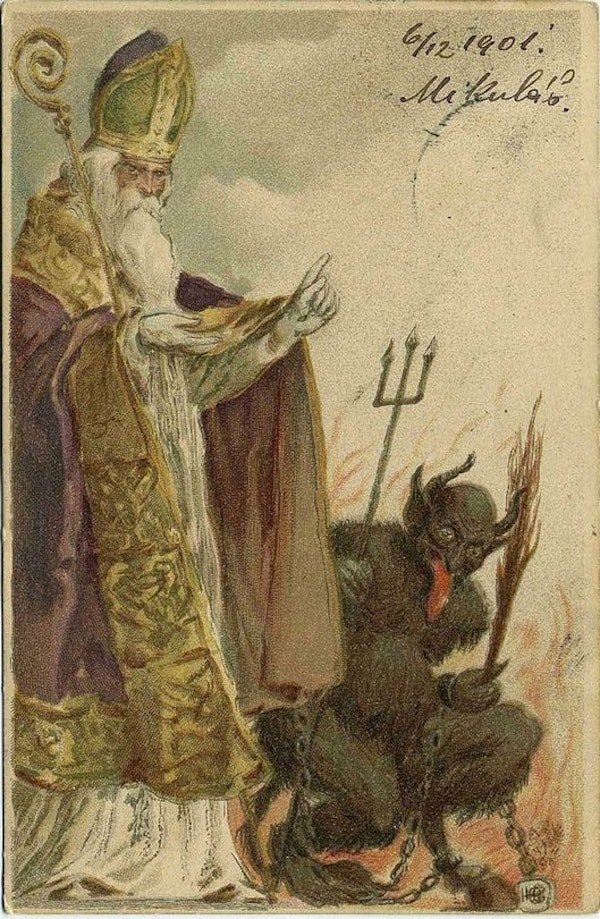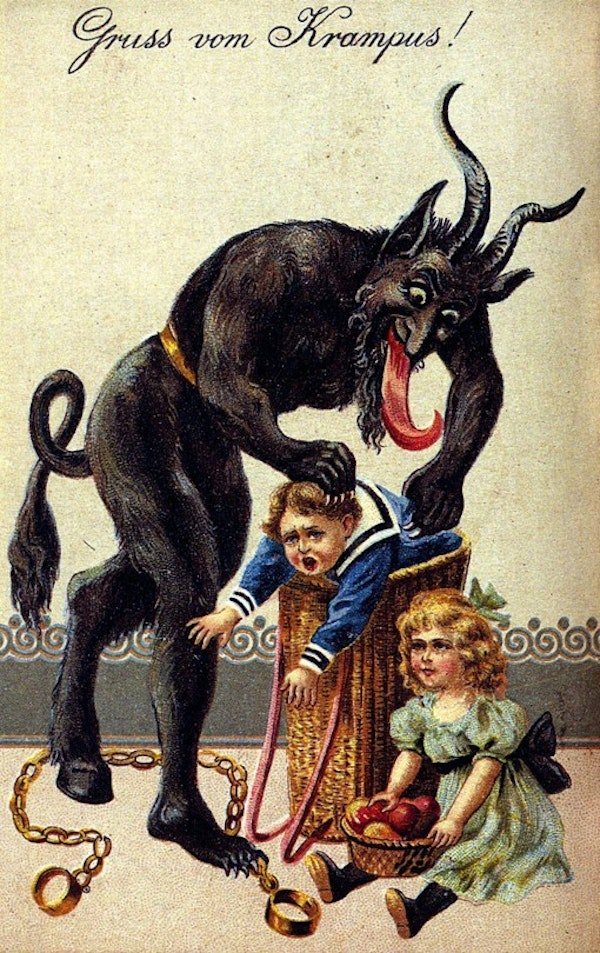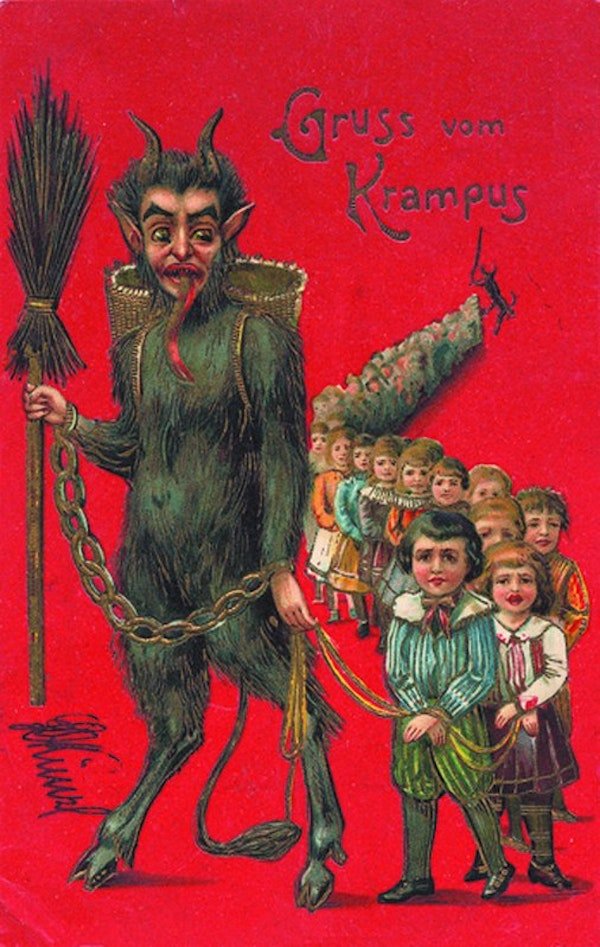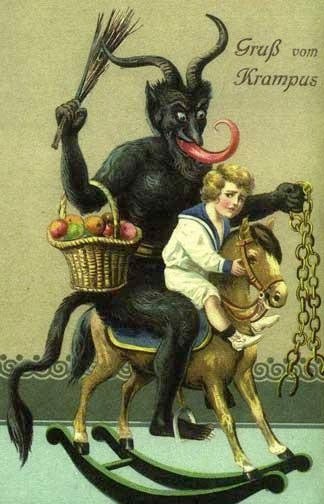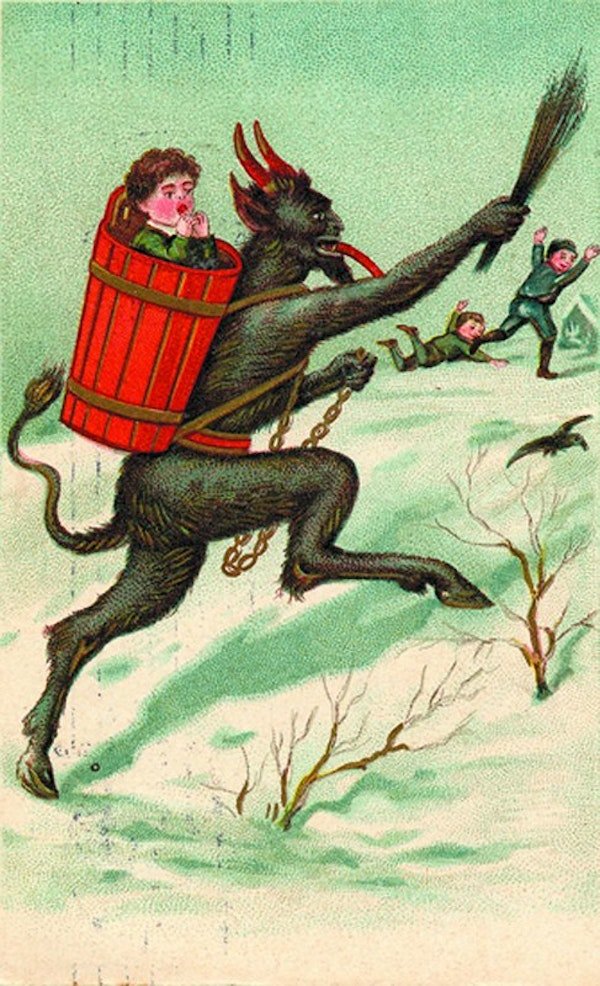Rockyfoot: Newfoundland’s Krampus
He sees you when your sleeping, he knows when you’re awake.
I vividly remember one childhood Christmas Eve when I couldn’t get to sleep — not because I was excited, but because I was terrified… of Santa.
Forty-some years later, I still sympathize with six-year-old me.
Santa had been watching me — no, judging me — for weeks, and on that very night he was going to be in my house. I was certain I’d wake to find his silhouette in my bedroom doorway as he completed his final tally of my naughty-to-nice ratio. It was a scary thought.
Truth is, I’m probably lucky I grew up when I did — in a window of calm: after the truly terrifying Christmas creatures had faded into the shadows, but before anxiety-inducing shelf elves arrived on the scene.
Krampus
If Santa Claus scared me, I shudder to think the breakdown Krampus would have induced. Krampus is a demon-like figure from central Europe. He is a sort of counterpoint to St. Nicholas; while St. Nick rewards the nice, Krampus punishes naughty.
Krampus Cards, Public Domain, public domain review
To put it mildly, Krampus is a disturbing figure. He’s usually depicted as a hulking, hairy humanoid with cloven hooves, the horns of a goat, and a long, pointed tongue. In one hand he carries a birch branch to swat misbehaving children; on his back, a basket to haul them away.
He was an undeniably effective tool for keeping kids in line.
I’m not sure many early Newfoundlanders had direct cultural ties to Krampus, but some certainly had connections to another anti-Claus.
Rockyfoot: A Newfoundland Krampus?
the stockings were hung by the chimney with care, in hopes that ol’ Rockyfoot was not drawing near.
Much as Krampus served as a counterpoint to St. Nick, Rockyfoot was, for some Newfoundlanders, an alternative to Santa Claus. Where Santa gave gifts, Rockyfoot filled Christmas stockings with stones.
To be honest, that’s about all I know about Rockyfoot. I’ve come across exactly one mention of him in my reading. He appears in John Widdowson’s 1977 text If You Don’t Be Good, where Widdowson collected a reference to the character in Terrenceville.
I have no idea how widely held the belief was (I suspect not very), and Widdowson’s informant didn’t offer any description of Rockyfoot’s appearance.
Which leaves plenty of room for the imagination.
I like to imagine Rockyfoot crawling up the cliffs from the cold North Atlantic every December 24th, searching for the year’s naughtiest children. His skin would be a mottled sickly grey, slick with kelp and studded with barnacles. His fingers—long, bony, and twisted like wind-bent tuckamore—would clutch a fistful of stones… perhaps pebbles scavenged from old shipwrecks, or bits of ballast torn from the ribs of sunken vessels.
He’d slip these stones into the stockings of misbehaving children, one by one. And maybe—if a child collected enough over the years—the weight of Rockyfoot’s “gifts” would finally drag them down, down, down toward a cold, waiting grave beneath the waves.
I don’t know — I’m new to writing cautionary horror.
But whatever Rockyfoot was, he was hardly alone. Across the island, countless supernatural figures have been tasked with keeping naughty children in line.
Boo-Darbies, Boo-Beggars & Boo-Men
Rockyfoot may have delivered a disappointing stocking-filler on Christmas morning but a contingent of ‘boo’ creatures — boo-darbies, boo-beggars and boo-men — lurked in the shadows of Newfoundland, threatening something darker than rocks in socks.
These figures were sinister beings were believed to be interested in abducting children. They are similar, I suppose, to the more widely recognized ‘Boogey Man’.
Often these boo-folk were said to be active at night, or lurking in dangerous places. They were used as threats to keep children safe. Kids were told things like, “If you’re not home by dark the boo-man will take you” or “stay away from the cliffs, the boo-darby lives there.”
Unlike Rockyfoot, whose danger was most acutely felt in the lead-up to Christmas, these boo-folk were dangerous all year round.
The boo-darby might have seemed especially scary in December, though.
While it’s not exactly clear what a boo-darby is (though it’s sometimes described as a horned creature). I think it’s interesting to consider that on some parts of the island, ‘darby’ means ‘mummer.’
Newfoundland Christmas mummers, despite the benign tea-towel depictions we see these days, were scary — they were mysterious strangers who spoke in strange voices and created mischief. It wasn’t all ‘wearin’ mother’s big forty-two bra,” either. Mummer costumes often involved animal skins and horns and, in some cases, were designed to deliberately frighten people. Parents sometimes used the threat of mummers to get children to behave.
I can’t draw a direct line between mummers and boo-darbies. That is, I can’t say one was the inspiration for the other but together mummer sightings and warnings of boo-darbies must have combined to make each experience much scarier than it would have been on its own.
In that, the boo-darby is a bit unique.
Too Real
Krampus and Rockyfoot were supernatural creatures most children would know only know through stories. Mummers and darbies were verifiable, flesh and bone beings that descended on the community every Christmas. Their physical presence must have made the danger seem entirely too real… and therefore a pretty effective deterrent.
It’s all a bit weird to me but it’s like they say, I guess — you get more flies with honey but, when it comes to raising kids, the threat of an omniscient rocky-boo-beastly-mummer-thing really makes them toe the line.
-
If You Don’t Be Good, John Widdowson, 1977
A Newfoundland Christmas, 1910, Joseph Dobbin, MUN Gazette, 1978.

